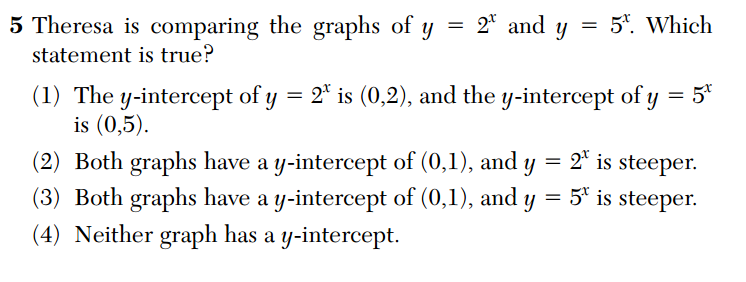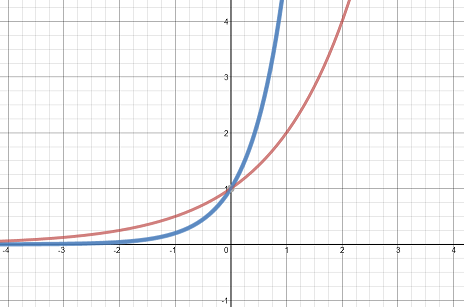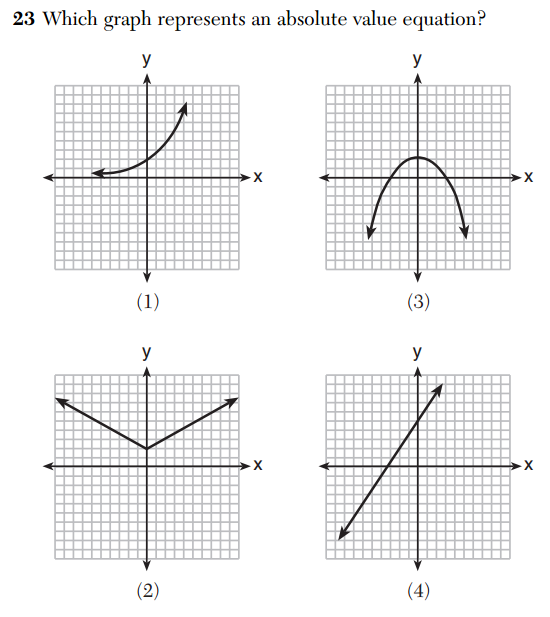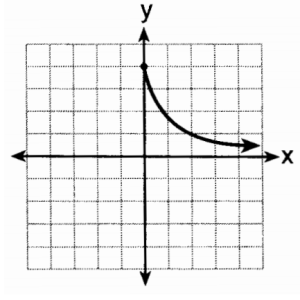Here is another installment in my series reviewing the NY State Regents exams in mathematics.
The following question appeared on the June, 2014 Algebra 2 / Trig exam.  To start, steeper is not a well-defined term, not in an Algebra 2 / Trig class, anyway. I’m not against using the word in everyday mathematics conversations, but I’m not a fan of putting it on an official exam like this. After all, I think these exams should model exemplary mathematical behavior. But that’s not the real issue here.
To start, steeper is not a well-defined term, not in an Algebra 2 / Trig class, anyway. I’m not against using the word in everyday mathematics conversations, but I’m not a fan of putting it on an official exam like this. After all, I think these exams should model exemplary mathematical behavior. But that’s not the real issue here.
Even if we accept what steeper means, it can not be said that either graph is steeper than the other. Take a look: here, is graphed in red and
is graphed in blue.
It seems pretty clear that the blue graph is steeper than the red on the right hand side, it also seems pretty clear that the red graph is steeper off to the left.
To be precise, the derivative of is greater than the derivative of
for
, thus making the red graph steeper for those values of x.
Thus, there really is no correct answer to this question. The answer key originally had (3) as the correct answer, but it is no truer than (2). Ultimately, a correction was issued for the problem, and both (2) and (3) were awarded full credit.
Mistakes are bound to happen when writing exams, and it’s good that a correction was ultimately issued. But this is a pretty obvious error. This question should not have made its way onto a high-stakes exam taken by tens of thousands of students. A thoughtful student might have been frustrated, confused, or disheartened confronting this question with no correct answer. Hopefully its impact didn’t extend beyond these two points.






